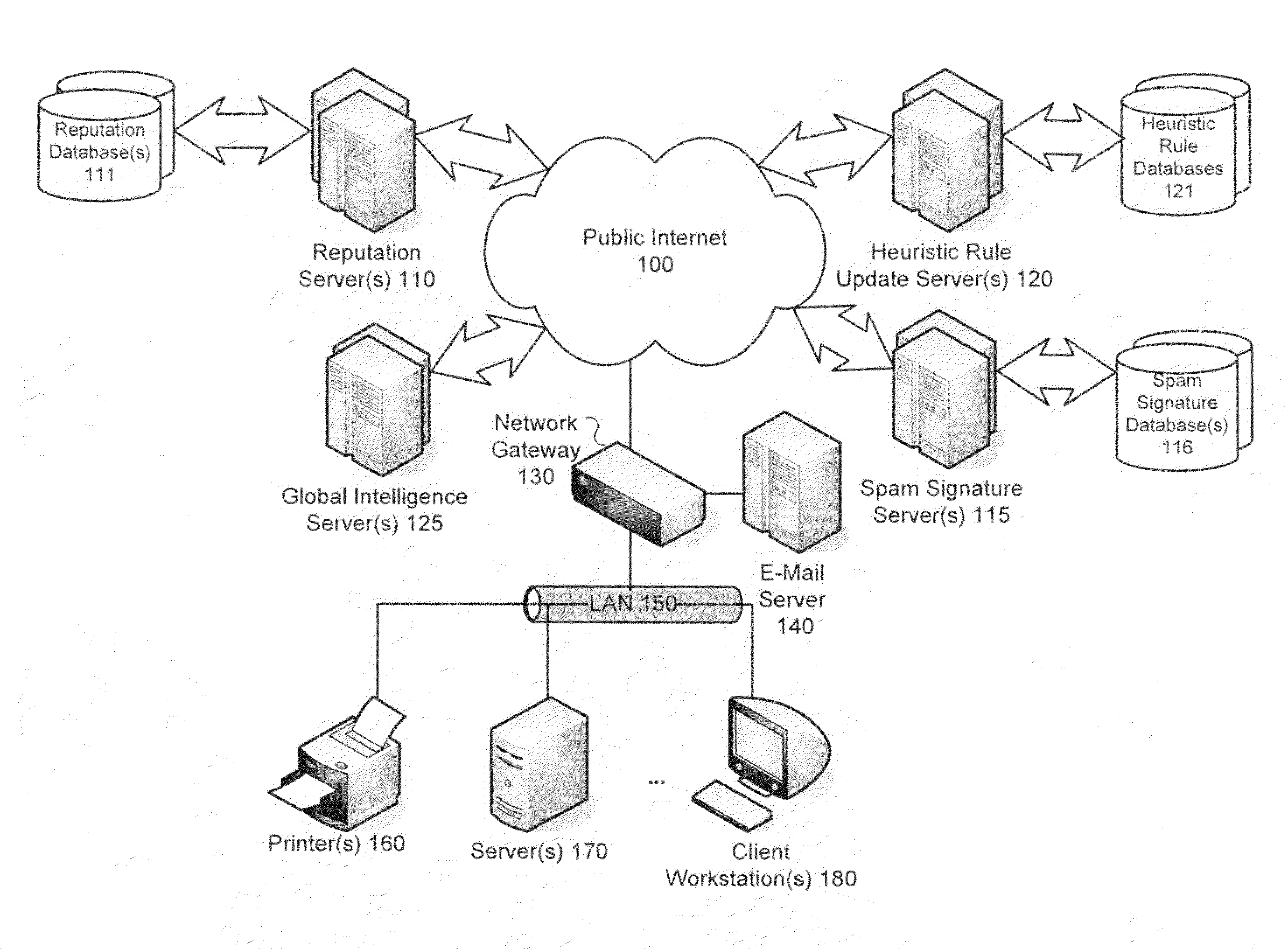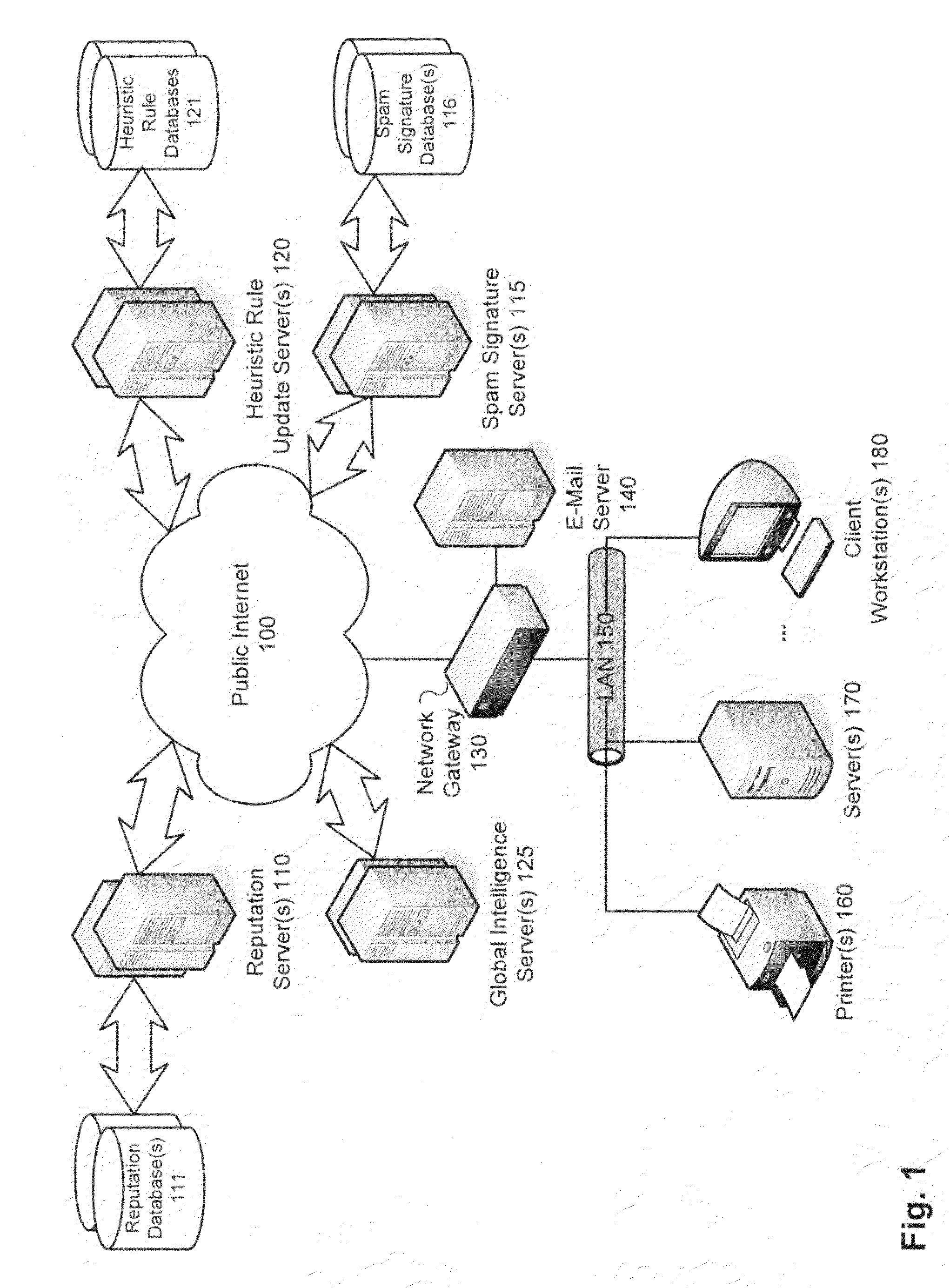Use of global intelligence to make local information classification decisions
a technology of information classification and global intelligence, applied in the field of information classification, can solve the problems of affecting the accuracy of content analysis, and receiving bulk messages that are not intended for use, so as to achieve the effect of accurate content analysis
- Summary
- Abstract
- Description
- Claims
- Application Information
AI Technical Summary
Benefits of technology
Problems solved by technology
Method used
Image
Examples
Embodiment Construction
[0023]Methods and systems for delaying local information classification, such as spam identification, until global intelligence has an opportunity to be gathered are described. In accordance with various embodiments of the present invention, intelligence gathering regarding email signature reputations and / or sender reputations is integrated into an email delivery network. In one embodiment, an anti-spam engine integrated within an email server delays the delivery of a message when the message cannot be determined in real-time to be spam or clean. Queuing messages for which a satisfactory determination cannot be made in real-time provides an opportunity for global intelligence to be gathered from this and / or other participating anti-spam engines in the network and results in more accurate detection of spam upon subsequent re-evaluation.
[0024]According to one embodiment, a novel 3-tier architecture is provided. An anti-spam engine of an email server, email client, client workstations,...
PUM
 Login to View More
Login to View More Abstract
Description
Claims
Application Information
 Login to View More
Login to View More - R&D
- Intellectual Property
- Life Sciences
- Materials
- Tech Scout
- Unparalleled Data Quality
- Higher Quality Content
- 60% Fewer Hallucinations
Browse by: Latest US Patents, China's latest patents, Technical Efficacy Thesaurus, Application Domain, Technology Topic, Popular Technical Reports.
© 2025 PatSnap. All rights reserved.Legal|Privacy policy|Modern Slavery Act Transparency Statement|Sitemap|About US| Contact US: help@patsnap.com



